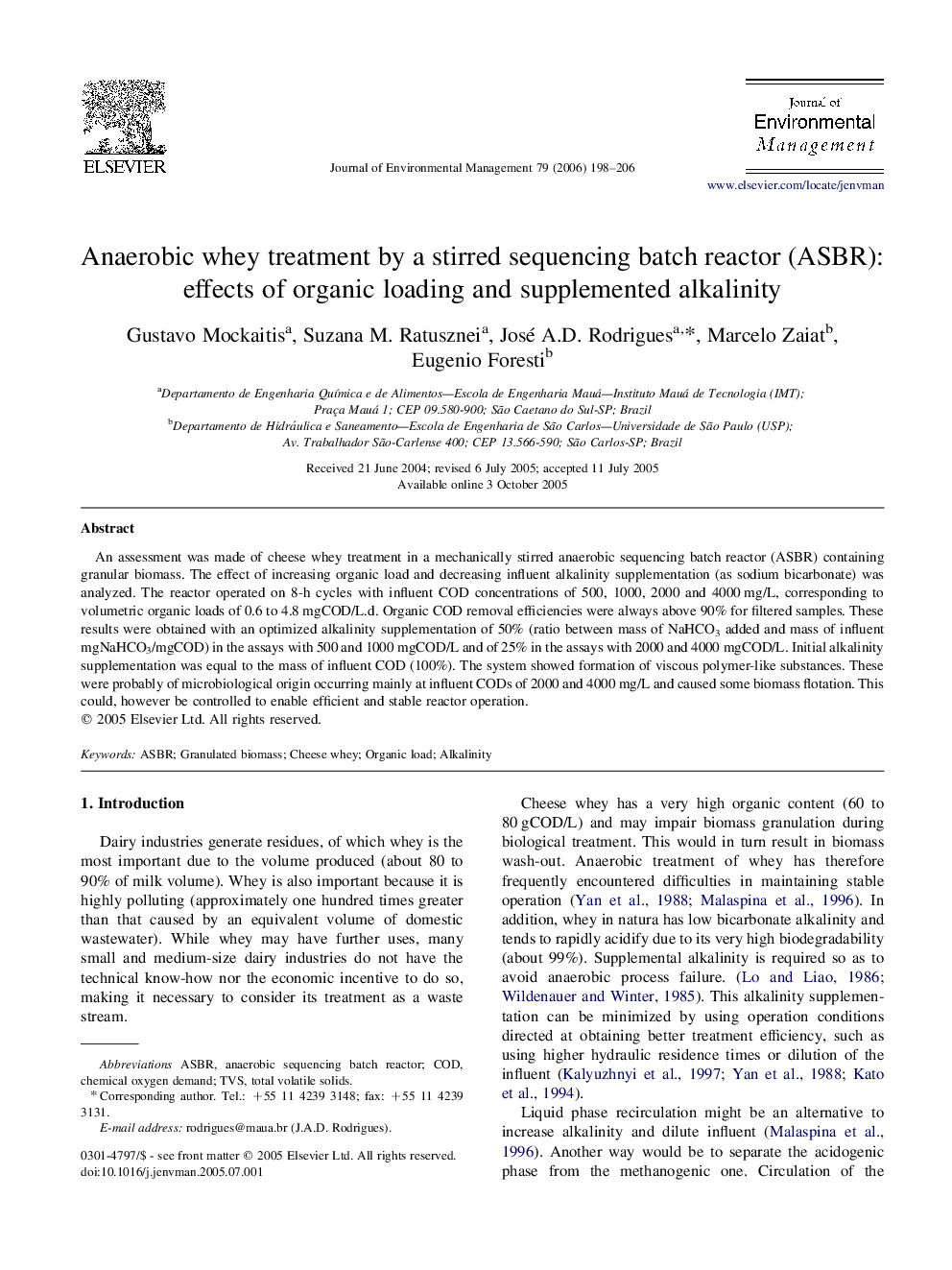| Article ID | Journal | Published Year | Pages | File Type |
|---|---|---|---|---|
| 1058230 | Journal of Environmental Management | 2006 | 9 Pages |
An assessment was made of cheese whey treatment in a mechanically stirred anaerobic sequencing batch reactor (ASBR) containing granular biomass. The effect of increasing organic load and decreasing influent alkalinity supplementation (as sodium bicarbonate) was analyzed. The reactor operated on 8-h cycles with influent COD concentrations of 500, 1000, 2000 and 4000 mg/L, corresponding to volumetric organic loads of 0.6 to 4.8 mgCOD/L.d. Organic COD removal efficiencies were always above 90% for filtered samples. These results were obtained with an optimized alkalinity supplementation of 50% (ratio between mass of NaHCO3 added and mass of influent mgNaHCO3/mgCOD) in the assays with 500 and 1000 mgCOD/L and of 25% in the assays with 2000 and 4000 mgCOD/L. Initial alkalinity supplementation was equal to the mass of influent COD (100%). The system showed formation of viscous polymer-like substances. These were probably of microbiological origin occurring mainly at influent CODs of 2000 and 4000 mg/L and caused some biomass flotation. This could, however be controlled to enable efficient and stable reactor operation.
